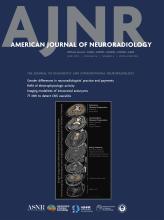Case of the Week
Section Editors: Matylda Machnowska1 and Anvita Pauranik2
1University of Toronto, Toronto, Ontario, Canada
2BC Children's Hospital, University of British Columbia, Vancouver, British Columbia, Canada
Sign up to receive an email alert when a new Case of the Week is posted.
June 10, 2021
Grisel Syndrome
- Background:
- Grisel syndrome is an acquired torticollis that involves subluxation of the atlantoaxial joint (C1/2) due to inflammatory ligamentous laxity following an infectious process in the head and neck. It primarily affects children (68% <12 years).
- It is thought to be due to hematogenous spread of septic emboli from the superior pharyngeal region via the periodontoid vascular plexus. The resulting localized hyperemia and inflammatory response cause weakening of the atlantoaxial ligaments and joint capsule, leading to instability.
- Clinical Presentation:
- Suspect in any child presenting with nontraumatic torticollis in the setting of recent upper respiratory tract infection or head/neck surgery
- Other symptoms can include: cock-robin positioning, aversion to head rotation, throat pain, neck pain and stiffness, cervical lymphadenopathy, paresthesias, weakness, nonspecific signs of infection, and fevers (often absent).
-
High-risk patients include those with conditions predisposing to ligamentous laxity or cervical spine instability.
- Key Diagnostic Features:
- Clinical:
- Absence of trauma
- Head/neck surgery or upper respiratory tract infection with onset of torticollis some days after
- Often will have normal inflammatory markers
- Imaging:
- Can be difficult to appreciate on radiographs in the absence of malalignment
- CT is gold standard, demonstrates atlantoaxial subluxation and rotation
- MRI evidence of inflammatory changes of the surrounding soft tissues, including disruption of the alar and transverse ligaments, with possible evidence of associated spinal cord compression
-
Severity is graded with the Fielding and Hawkins classification:
-
Type I: Rotatory atlantoaxial dislocation without anterior displacement of the atlas (ie, atlantodental interval <3 mm)
-
Type II: Rotatory atlantoaxial dislocation with anterior displacement of the atlas by 3–5 mm
-
Type III: Rotatory atlantoaxial dislocation with anterior displacement of the atlas >5 mm
-
Type IV: Rotatory atlantoaxial dislocation with posterior displacement of the atlas
-
- Clinical:
- Differential Diagnoses:
- Congenital:
- Down syndrome: Atlantoaxial subluxation, hypoplastic posterior arch of C1
- Osteogenesis imperfecta: Basilar impression
- Mucopolysaccharidoses, particularly Morquio syndrome: Ligament laxity with hypoplasia of odontoid
- Neurofibromatosis type 1: Hypoplastic posterior vertebral elements, enlarged neural foramina
- Spondyloepiphyseal dysplasia: Vertebral dysplasia
- Os odontoideum: Well-corticated ossicle of hypoplastic dens
-
Acquired:
-
Inflammatory arthritides: Bony erosions, subluxation, pannus formation, joint effusions
-
Vertebral osteomyelitis: Periosteal reaction, marrow edema
-
Septic arthritis: Effusion, subchondral bone destruction
-
Trauma: Possible fracture of odontoid
-
- Congenital:
-
Treatment:
-
Conservative management includes bed rest, antimicrobial therapy, muscle relaxants, anti-inflammatory agents, cervical traction, and soft or hard collar. Repeat imaging to assess alignment is required.
-
Residual subluxation after 8 weeks of treatment or neurologic symptoms may require fixation.
-
Up to 15% of patients can develop permanent neurologic sequelae.
-











